Self-guided Sightseeing Tour #6 in Budapest, Hungary
Legend
Guided Free Walking Tours
Book free guided walking tours in Budapest.
Guided Sightseeing Tours
Book guided sightseeing tours and activities in Budapest.
Tour Facts
9.8 km
222 m
Experience Budapest in Hungary in a whole new way with our free self-guided sightseeing tour. This site not only offers you practical information and insider tips, but also a rich variety of activities and sights you shouldn't miss. Whether you love art and culture, want to explore historical sites or simply want to experience the vibrant atmosphere of a lively city - you'll find everything you need for your personal adventure here.
Activities in BudapestIndividual Sights in BudapestSight 1: Fészek Artists’ Club
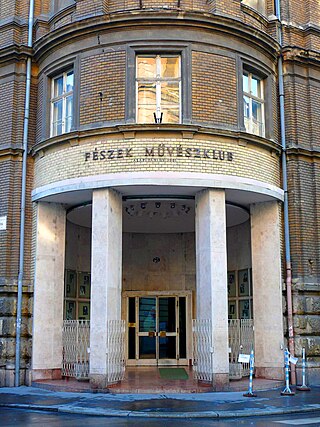
The Fészek Art Club is a club of the Budapest art world founded in 1901, today it is a non-profit, nationwide association where literary, musical, theatre, film and fine arts events are held that can be visited by anyone. For informal social life, a restaurant and a restaurant-wine bar are also at guests' disposal.
Sight 2: Kéthly Anna tér

Kethly Anna Square is a new square in Budapest VII. district, Erzsébetváros. It got its name in 2001. The square was designed by Katalin Baraczka.
Sight 3: Szent Rókus-kápolna
The St. Rókus Chapel in Budapest is named after Saint Rocus, the miracle-working Franciscan monk and patron saint of those cured of plague epidemics. In its present form, it has been standing since 1765 along Kerepesi, today's Rákóczi Road, on the Józsefváros side of the road.
Wikipedia: Szent Rókus-kápolna (Budapest) (HU), Url Miserend
Sight 4: Klauzál tér
The Klauzál tér was the largest square in the former Jewish quarter of Budapest, Hungary. Located in the seventh district, it was the heart of the city's old Jewish quarter. Nowadays, this area is also known as the party district in Hungarian bulinegyed, because of its many pubs nearby.
Sight 5: Sász-Chevra Zsinagóga
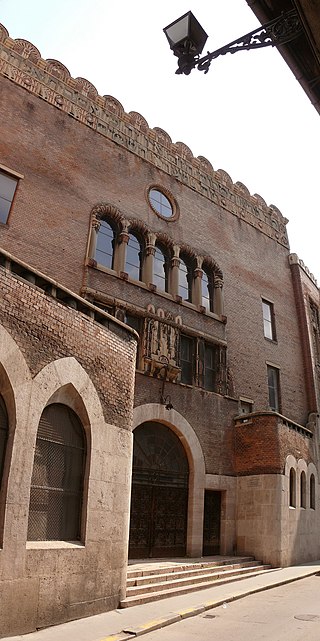
The Kazinczy Street Synagogue, variously called the Sasz-Chevra Synagogue and the Great Orthodox Synagogue is an Orthodox Jewish congregation and synagogue complex, located at 29–31 Kazinczy Street, in Pest, in the VII district of Budapest, Hungary. The congregation worships in the Ashkenazi rite.
Sight 6: Szimpla Kert
Szimpla Kert is a ruin bar or romkocsma, which means "Simple Garden" in Hungarian, located in the Jewish Quarter of the 7th district of Budapest, Hungary. It is considered the pioneer of ruin bars. The pub started as a place for people to find a cheap drink in a relaxed environment, but has grown to become a tourist attraction and community center. Movie showings, live music performances, an art gallery, the Kazinczy Living Library, the Szimpla Farmers' Market, and the Szimpla Bringa bicycle flea market are just a few of the community activities that are held at the bar.
Sight 7: Memorial of the hungarian jewish martyrs
The Raoul Wallenberg Emlékpark in the rear courtyard of the Dohány Street Synagogue holds the Memorial of the Hungarian Jewish Martyrs — at least 400,000 Hungarian Jews were murdered by the Nazis. Made by Imre Varga, it resembles a weeping willow whose leaves bear inscriptions with the names of victims. There is also a memorial to Wallenberg and other Righteous Among the Nations, among them: Swiss Vice-consul Carl Lutz; Ángel Sanz Briz, the Spanish Ambassador in Hungary; Giorgio Perlasca, an Italian man who, with a strategic escamotage, declared himself the Spanish consul, releasing documents of protection and current passports to Jews in Budapest without distinction ; Mons. Angelo Rotta, an Italian Prelate Bishop and Apostolic Nuncio of the State of Vatican City in Budapest, which issued protective sheets, misrepresentations of baptism and Vatican passports to Jews, without distinction of any kind present in Budapest, who saved, with his secretary Mons. Gennaro Verolino tens of thousands of Hungarian Jews during World War II.
Wikipedia: Raoul Wallenberg Holocaust Memorial Park (EN), Url Kozterkep
Sight 8: Hősök zsinagógája
The Temple of Heroes or Synagogue of Heroes is a Jewish religious building located in the courtyard of the Dohany Street Synagogue. Today it is an inseparable part of the building complex.
Sight 9: Hungarian Jewish Museum and Archives
The Hungarian Jewish Museum is a thematic museum located in the museum wing next to the Dohany Street Synagogue building, which presents artifacts of Hungarian Jewish culture and history. It is owned and managed by MAZSIHISZ, one of Central Europe's outstanding Judaica collections.
Sight 10: Dohány Street Synagogue
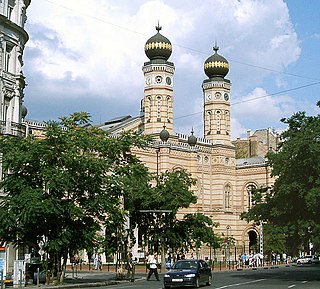
The Dohány Street Synagogue, also known as the Great Synagogue or Tabakgasse Synagogue, is a Neolog Jewish congregation and synagogue, located on Dohány Street in Erzsébetváros of Budapest, Hungary. It is the largest synagogue in Europe, seating 3,000 people, and is a centre of Neolog Judaism. The congregation worships in the Ashkenazi rite.
Sight 11: Belvárosi Színház
It is one of the Budapest inclusive theatres of the Downtown Theatre, located on Károly boulevard, which opened its doors in 2004. Apart from his name, he has no connection with Artúr Bárdos's company operating under this name between 1917 and 1951.
Sight 12: Károlyi kert
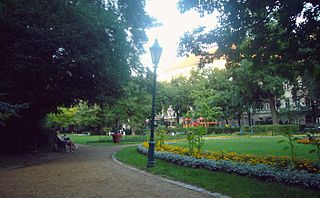
The Károlyi Garden public park in Budapest V. district. It is the oldest preserved garden in this function of the city centre and the best documented among the few palace gardens in Hungary. The garden is bordered by Ferenczy István Street to the north, Magyar Street to the east, Henszlmann Imre Street to the south and Károlyi Palace to the west. Its area has remained unchanged since the end of the 17th century at 7625 m².
Sight 13: Petőfi Irodalmi Múzeum
The Petőfi Literary Museum (PLM) is a major Hungarian museum in Budapest. It was founded in 1954, as the successor organisation to Petőfi House. It was named to honour the memory of Sándor Petőfi.
Sight 14: Katona József Színház Kamra
The Katona József Theatre has been operating as a theatre with its own company in Petőfi Sándor Street since the autumn of 1982. In a short time, it became Budapest decisive, artistic theater. Even after three decades, he continues to entertain his audience with demanding, internationally renowned productions. The company performed abroad for the first time in 1985, and since then it has visited forty countries in five parts of the world.
Sight 15: Ady Endre Emlékmúzeum
The Ady Endre Memorial Museum in Budapest was an exhibition space (Ady Memorial Apartment) established in 1977 to commemorate the centenary of the poet's birth.
Wikipedia: Ady Endre Emlékmúzeum (Budapest) (HU), Facebook, Website
Sight 16: Nereidák kútja
The Fountain of the Nereids or the Fountain of the Nayads is a group of statues depicting two female figures with dolphins and shells on their pedestals in Ferenciek Square in District V of Budapest.
Sight 17: Belvárosi Ferences templom
The St. Peter's Church of Alcantara in Budapest, often just a downtown Franciscan church, is located in downtown Pest, on Ferenciek Square. Roman Catholic, protected as a monument Franciscan church. Its patron saint is St. Peter of Alcantara. Parish church, next to it stands a Franciscan monastery.
Wikipedia: Alcantarai Szent Péter-templom (Budapest) (HU), Url Miserend
Sight 18: Belvárosi Szent Anna-plébániatemplom
The St. Anne's Church in the City Centre, also known as Servita Church, is located in Budapest, in the city center, on Szervita Square. Until the end of World War II, it operated under the administration of the Servite order, today it belongs to the Downtown Assumption Parish. The church is a category I monument under Act LIV of 1997 under trunk number 15394.
Wikipedia: Belvárosi Szent Anna-plébániatemplom (HU), Url Miserend
Sight 19: IV. Károly király
Charles I was Emperor of Austria, King of Hungary, and the ruler of the other states of the Habsburg monarchy from November 1916 until the monarchy was abolished in April 1919. He was the last of the monarchs belonging to the House of Habsburg-Lorraine to rule over Austria-Hungary. The son of Archduke Otto of Austria and Princess Maria Josepha of Saxony, Charles became heir presumptive of Emperor Franz Joseph when his uncle Archduke Franz Ferdinand of Austria was assassinated in 1914. In 1911, he married Princess Zita of Bourbon-Parma. He is venerated in the Catholic Church, was beatified by Pope John Paul II on 3 October 2004, and is known to the Catholic Church as Blessed Karl of Austria.
Sight 20: Rumbach utcai zsinagóga
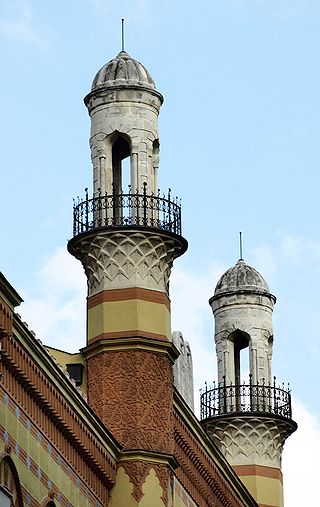
The Rumbach Street Synagogue, also called the Status Quo Ante Synagogue, is a Neológ congregation and synagogue, located in Belváros, the inner city of the historical old town of Pest, in the eastern section of Budapest, Hungary. Since 2021, the building has also been used as a concert hall and Jewish museum.
Sight 21: Underground Railway Museum
The Underground Railway Museum, also known as the Millennium Underground Museum, is a museum located under Deák Ferenc square in the centre of the Hungarian capital city of Budapest. It is accessible from the pedestrian subway system that links the square to Deák Ferenc tér metro station and is housed in a tunnel that once carried the tracks of line M1 of the Budapest Metro.
Wikipedia: Underground Railway Museum (Budapest) (EN), Website, Facebook
Sight 22: Deák téri evangélikus templom
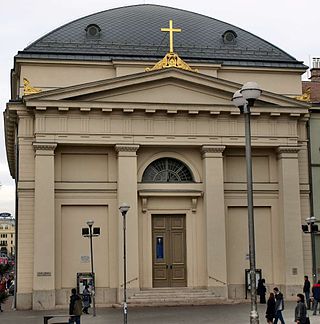
The Lutheran Church on Deák Square is Budapest oldest and best-known Lutheran church, a classicist-style hall church without a tower on Deák Ferenc Square in Budapest. The largest Protestant church in Budapest. Many other Lutheran institutions operate in the block formed together with the adjoining buildings, which is why the area is often called Insula Lutherana.
Sight 23: Erzsébet Square
In the V. district of Erzsébet Square Budapest. It is bordered by Vienna Street, József Attila Street, Bajcsy-Zsilinszky Street and Thirty ad Street. This is the largest green space in downtown Pest.
Sight 24: Pesti Vigadó
Vigadó is Budapest's second largest concert hall, located on the Eastern bank of the Danube in Budapest, Hungary.
Sight 25: Haláruslány kút
The Fishmonger's Girl Fountain is one of Budapest's public sculptures, a classicist drinking fountain. It was made in 1862 by the sculptor László Dunaiszky and the builder by Mátyás Gottgéb. It is located on Kristóf Square in District V.
Sight 26: Pesti Színház
The Pest Theatre is the chamber theatre of the Vígtheatre in Budapest, the venue located in district V has a capacity of 538 spectators.
Sight 27: Istenszülő elhunyta Nagyboldogasszony-székesegyház
The Assumption Cathedral of the Blessed Mother of God is a Russian Orthodox cathedral in Budapest, district V. It is part of the World Heritage View along the Danube.
Wikipedia: Istenszülő elhunyta Nagyboldogasszony-székesegyház (Budapest) (HU), Website
Sight 28: Petőfi Sándor
The Petőfi statue faces March 15th Square in Budapest city center, on Petőfi Square.
Wikipedia: Petőfi Sándor-szobor (Budapest) (HU), Url Kozterkep
Sight 29: Peterffy palace
The Péterffy Palace is a baroque city palace located next to March 15 Square in Budapest, at 2 Piarista Street. It is an important monument of Hungarian Baroque architecture, the only secular Baroque building preserving Pest's original form. Since 1831, the Centennial Restaurant has been operating in it.
Sight 30: The Main Parish Church of the Assumption in the centre of Budapest
Budapest's Inner City Parish Church, officially the Church of the Blessed Virgin Mary, is the main parish church of Budapest. It is often referred to as the City Parish Church, or Downtown Parish Church.
Wikipedia: Inner City Parish Church in Pest (EN), Website, Url Miserend, Facebook
Sight 31: Contra-Aquincum
Contra-Aquincum is a Roman fortress, an important station of the Pannonian limes. It was built at the beginning of the 2nd century and rebuilt from its foundations at the end of the 3rd century. Its significance was given by its unusually thick walls, control of the eraviscus "capital", as well as the supervision of an ancient trade crossing. The ancient name of Contra-Aquincum is probably Pession (Πέσσιον). Its remains can be found in Budapest V. district, on March 15th Square, not far from Elisabeth Bridge.
Sight 32: Queen Elisabeth
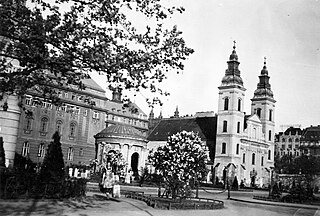
Queen Elisabeth's monument in Budapest was a memorial site in Budapest that lasted for decades, which was eventually constructed in a modified form and later demolished. The statue of the Queen was later placed in the public square again.
Wikipedia: Erzsébet királyné budapesti emlékműve (HU), Url Kozterkep
Sight 33: Esperanto Park
The Esperanto Park (Budapest) does not officially exist, yet many people call it Esperanto Park!
Sight 34: Dr. L.L. Zamenhof
L. L. Zamenhof was the creator of Esperanto, the most widely used constructed international auxiliary language.
Sight 35: Tabáni Alexandriai Szent Katalin plébániatemplom
The St. Catherine of Alexandria Church is a Roman Catholic church in the Tabán quarter of Budapest, Hungary. It is the parish church of the Tabán Parish which also comprises parts of Gellért Hill and Naphegy. The church is a listed monument that was built in Central European Baroque style between 1728 and 1777. It was reconstructed several times in the 19th–20th centuries.
Wikipedia: St. Catherine of Alexandria Church, Budapest (EN), Url Kozterkep, Url Miserend
Sight 36: Magyar Mesemúzeum
The Storytelling Museum is a museum located in Budapest. Its collection is intended to present the history of storytelling in Hungary.
Sight 37: Ybl Miklós
Miklós György Ignác Knight Ybl was a Hungarian architect, one of the greatest Hungarian masters of the 19th century, a representative of historicism of European importance. His best-known works are the Hungarian State Opera House in Budapest, the Main Customs House, the Castle Garden Bazaar, St. Stephen's Basilica or the Immaculate Conception Church (Fót).
Sight 38: Semmelweis Orvostörténeti Múzeum, Könyvtár és Levéltár
The Semmelweis Museum, Library and Archive of the History of Medicine is a museum, library and archive in Budapest, Hungary. It was founded in 1965, and became a department of the Hungarian National Museum in 2017. The museum is located in the 18th-century house where Ignaz Semmelweis was born in 1818. The exhibition covers the development of healthcare in Hungary and the main stages in the history of medicine in Europe.
Wikipedia: Semmelweis Museum of Medical History (EN), Website
Sight 39: Relief of a Stag
The Tabán usually refers to an area within the 1st district of Budapest, the capital of Hungary. It lies on the Buda side of the Danube, to the south of György Dózsa Square, on the northern side of Elisabeth Bridge and to the east of Naphegy. Several other Hungarian cities and towns also have districts called Tabán.
Sight 40: Urania Observatory (public)
Uránia Observatory was originally an astronomical institution of the Hungarian Astronomical Association and, after its merger, of the Society for the Dissemination of Scientific Information (TTIT/KIC), together with the Budapest Planetarium. It was founded by György Kulin in 1947. In 2018, its operation ceased without any announcement, and the Maria Kopp Institute for Population and Families moved in its place.
Share
Disclaimer Please be aware of your surroundings and do not enter private property. We are not liable for any damages that occur during the tours.
GPX-Download For navigation apps and GPS devices you can download the tour as a GPX file.
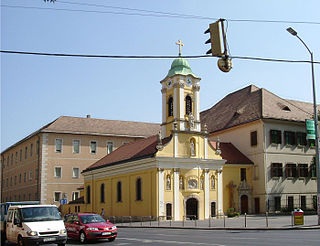
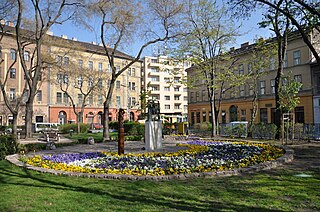
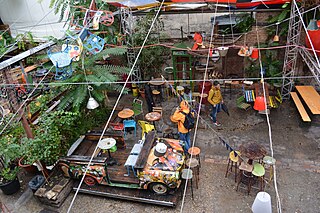

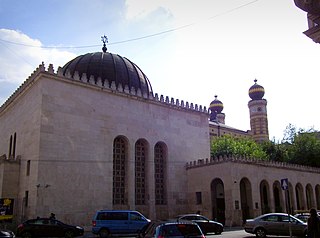
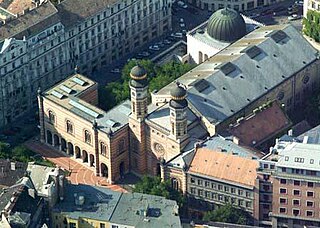
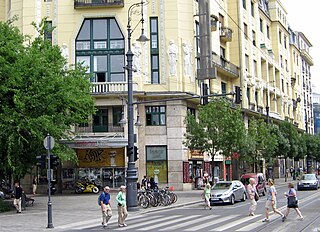
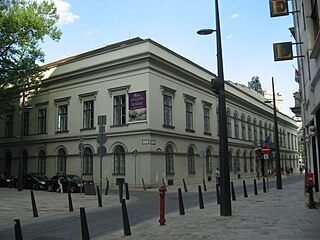
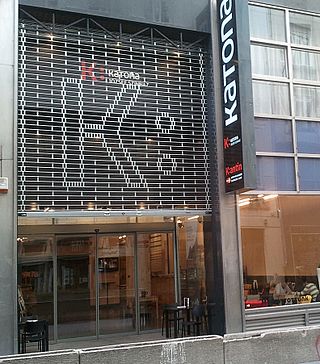
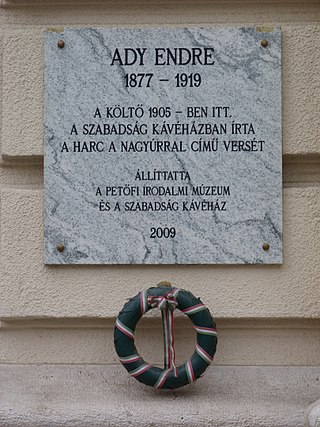
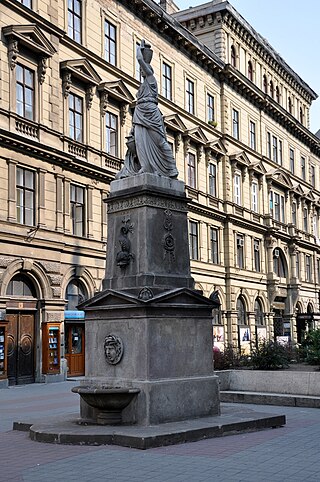
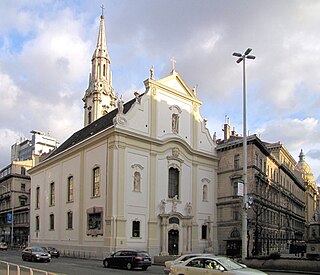
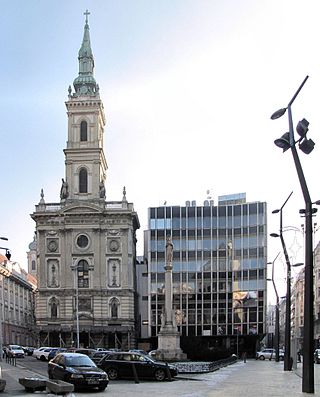
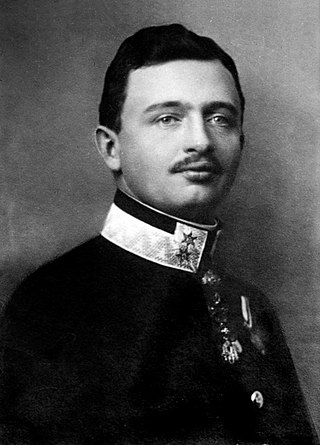
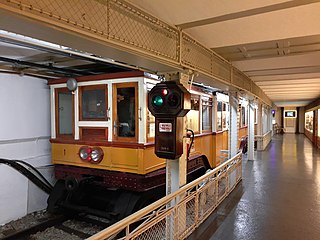
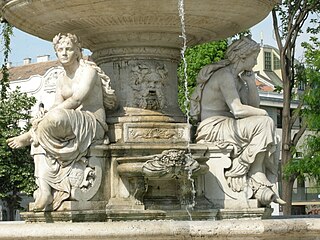
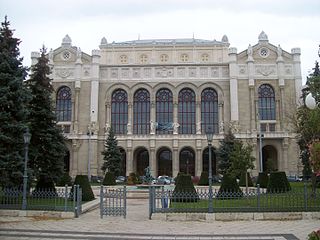

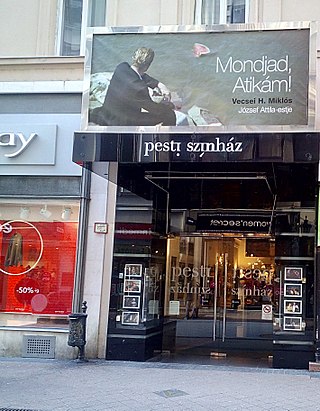

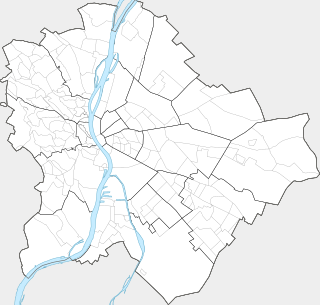
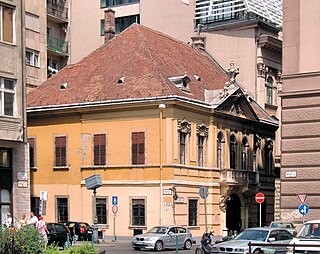
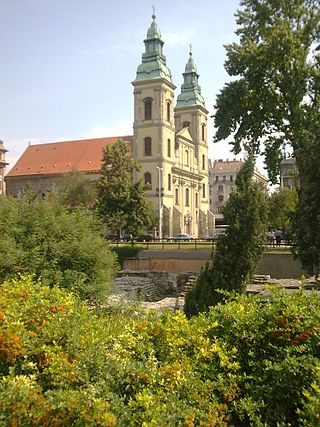
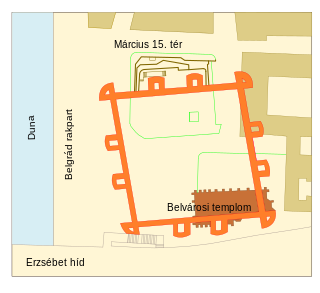
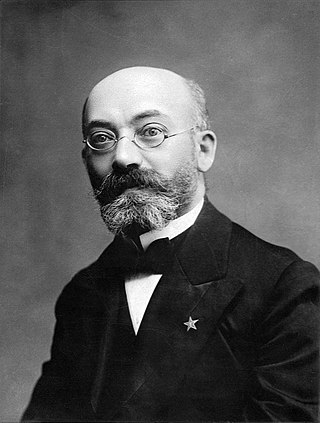
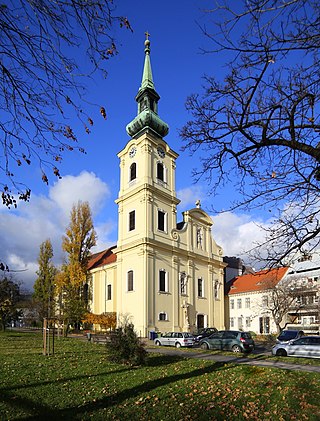

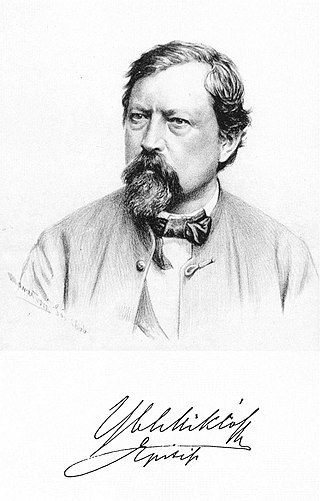
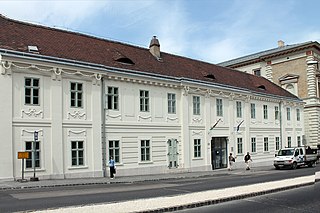
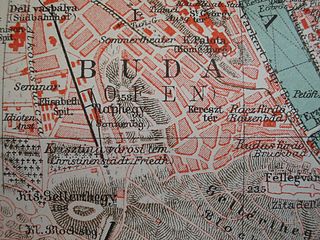
.jpg)